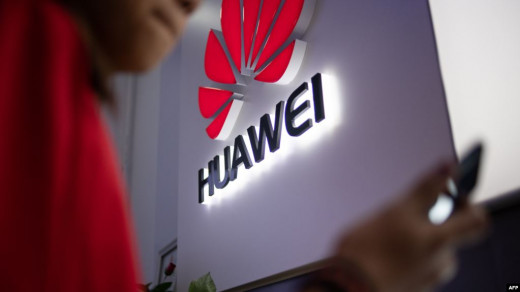Latest Use of Technology
1. A New Feature to Unlock the Car and Turn It On With the iPhone!

On Wednesday, Apple released its first trial version of the new beta 13.4 operating system, which, along with some expected performance and bug repair improvements, has a new feature that may take the company to a new level.
- Tech-interested 9to5Mac explained that beta 13.4's beta version includes signals for a new car key application interface called CarKey.
- It appears that this feature will allow users to lock, unlock and even turn on their cars, using iPhone or Apple Watch phones.
According to the system's schatuly files, the feature will work with any NFC-enabled vehicle, i.e. "near-range communication". Simply put, users should round their phone or watch from a reader near the car, to activate the CarKey feature, in which case the user will not need to use Face ID, Touch ID or even a password, as long as the feature "Express Mode" is activated, and this is similar to what happens when pushing the iPhone via tabi Wallet.
Users of this feature can share it with any other people they trust, such as family members.
2. Finally. Google Reveals YouTube's Annual Profits from Ads

YouTube has generated $5 billion in advertising revenue in the past three months, Google revealed Monday, according to its parent company Alphabet's earnings report for the fourth quarter.
This is the first time since Google bought YouTube about 15 years ago for $1.65 billion, revealing the amount of money that YouTube advertising contributes to the entire revenue of the giant Google. This brings YouTube's monthly contribution to nearly $15 billion annually, or 10 percent of Google's total revenue.
Overall, Alphabet reported revenues of $46 billion in the quarter ended December 31, 2019, up 17 percent from 2018. Nearly $10.7 billion of that amount was a profit, the company says. Google continues to be the biggest profit maker in alphabet's sprawling empire, earning $27.2 billion in the quarter.
But in addition to YouTube advertising revenue, Google also discloses the financial performance of the cloud computing division, which generated $2.6 billion in revenue during the quarter, the report revealed.
3. Huawei Pledges to Set Up 5G Manufacturing Centers in Europe

Chinese telecommunications giant Huawei on Tuesday pledged to set up manufacturing centers in Europe as part of a bid to ease U.S. pressure on EUROPEAN Union countries to prevent the company from participating in the development of 5G networks. "Huawei is more committed to Europe than ever before," said The Company's Europe representative, Abraham Liu, at a reception in Brussels for the Chinese New Year.
"So we made the decision to set up manufacturing centers in Europe so that the fifth generation of Europe-specific telecommunications networks would be made in Europe," he said.
The announcement comes days after the European Union issued a resolution allowing its member states to prevent telecommunications companies deemed to pose a security risk from accessing sensitive sections of the 5G network infrastructure.
But the EU plan closely reflects rules adopted by Britain that limit Huawei's role, without preventing it from participating in the development of 5G communications networks that allow data to be transmitted at high speed. The guidelines were reached after months of painstaking discussions within the European Union, which is seeking a compromise that balances Huawei's dominance in building 5G networks with Washington's security concerns.
In his speech, Liu said the world's technology sector "is increasingly intertwined with geopolitical issues, trade negotiations, and diplomatic dialogue among nations".
He urged Europe, the United States and China to "make more efforts in political talks to discuss cooperation and common rules". The decision to ban Huawei now depends entirely on member states, but the European Commission's recommendations allow European capitals to resist Washington's demands.
The construction of factories in Europe would help convince European countries not to take harsh measures against the Chinese telecommunications giant, given that Germany is currently under the microscope after postponing its position on whether or not to ban the Chinese company. The Chinese company says it has 13,000 employees in EU countries and operates two regional centers and 23 research centers in 12 European countries.
Huawei is one of the world's leading telecommunications technology companies and one of the few to build 5G networks alongside Nokia and Ericson. The United States considers the Chinese company a potential threat to cybersecurity and fears that the Chinese government, which is closely associated with it, will use it for espionage operations.
4. Scientists Develop Bacteria-Resistant Phone Portfolio

British scientists have used a new substance, with antibacterial properties, to make smartphone wallets to reduce the spread of some deadly bacteria. Scientists have used 3D printing technology to manufacture pieces that can kill bacteria, which are resistant to antibiotics, such as bacteria scientifically known as MRSA.
The new antibacterial material, not limited to phones, can be used in cutting and tools used in hospitals, door handles and children's toys, in addition to artificial teeth and many products used by humans daily. Hopes for the substance are to help stop the spread of serious diseases in care homes and other facilities, which could save the lives of many at-risk patients.
According to the World Health Organization, antibiotic-resistant bacteria pose a "serious global threat" to public health. WHO sees it as a "post-antibiotic era", which could see people die from a simple infection that has been possible for decades.
In response to this threat, researchers from the University of Sheffield in the United Kingdom have decided to develop a mechanism that combines 3D printing with antibacterial compounds made of silver, plus chemicals and antimicrobial compounds. The results showed that the additive was able to successfully integrate with the materials used in 3D printing, without affecting the production mechanism, or its rigidity.
If used under normal conditions, the compounds are effective against harmful bacteria, without causing any toxic effects on human cells. Scientists are seeking to develop other products using the new anti-compound, in partnership with leading manufacturers to be put on the market.








